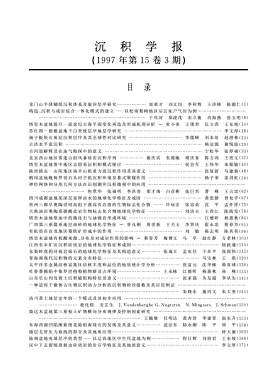The Discovery and Significance of Glauconites in the Huagong Formation of the Oligocene,Xihu Depression,East China Sea
- Received Date: 1996-06-12
-
Key words:
- glauconite /
- huagong formation /
- xihu depression
Abstract: The glauconite formed in the abnormal marine environment was found firstly in the Huagong Forma- tion of the Oligocene, Xihu Depression, East China Sea. It can be divided into three types as follows:granule glauconite, cemented glauconite and clastic pseudomorph glauconite. The first two types wereformed during the sedimentation and the beginning of diagenesis. It was thought by the sedimentarystudies that the Huagong Formation was generally formed in the shoreline lacustrine delta-fluvial deposi-tional systems. But the formation was influenced by marine water or salt-semisalt water in some degree.The re- depositional fossil in the formation, at least a part of it was probably developed and preserved atthe same place. Con-sequently, the age of the Huagong Formation would be probably taken as the EoceneEpoch. Besides the chronos-tratigraphy, the idea would lead to re-analysis for the problems about the e-valuating stages, dimensional dis-tribution of sedimentary systems as well as the prediction of favorablefacies belts for oil and gas.
| Citation: | Wu Fadong, Lu Yongchao, Chen Ping, Zhou Ping. The Discovery and Significance of Glauconites in the Huagong Formation of the Oligocene,Xihu Depression,East China Sea[J]. Acta Sedimentologica Sinica, 1997, 15(3): 158-161. |






 DownLoad:
DownLoad: